Horticulture Highlight: Bottlebrush Buckeye, Aesculus parviflora
Jim Gorman July 7, 2025 Plants & Wildlife
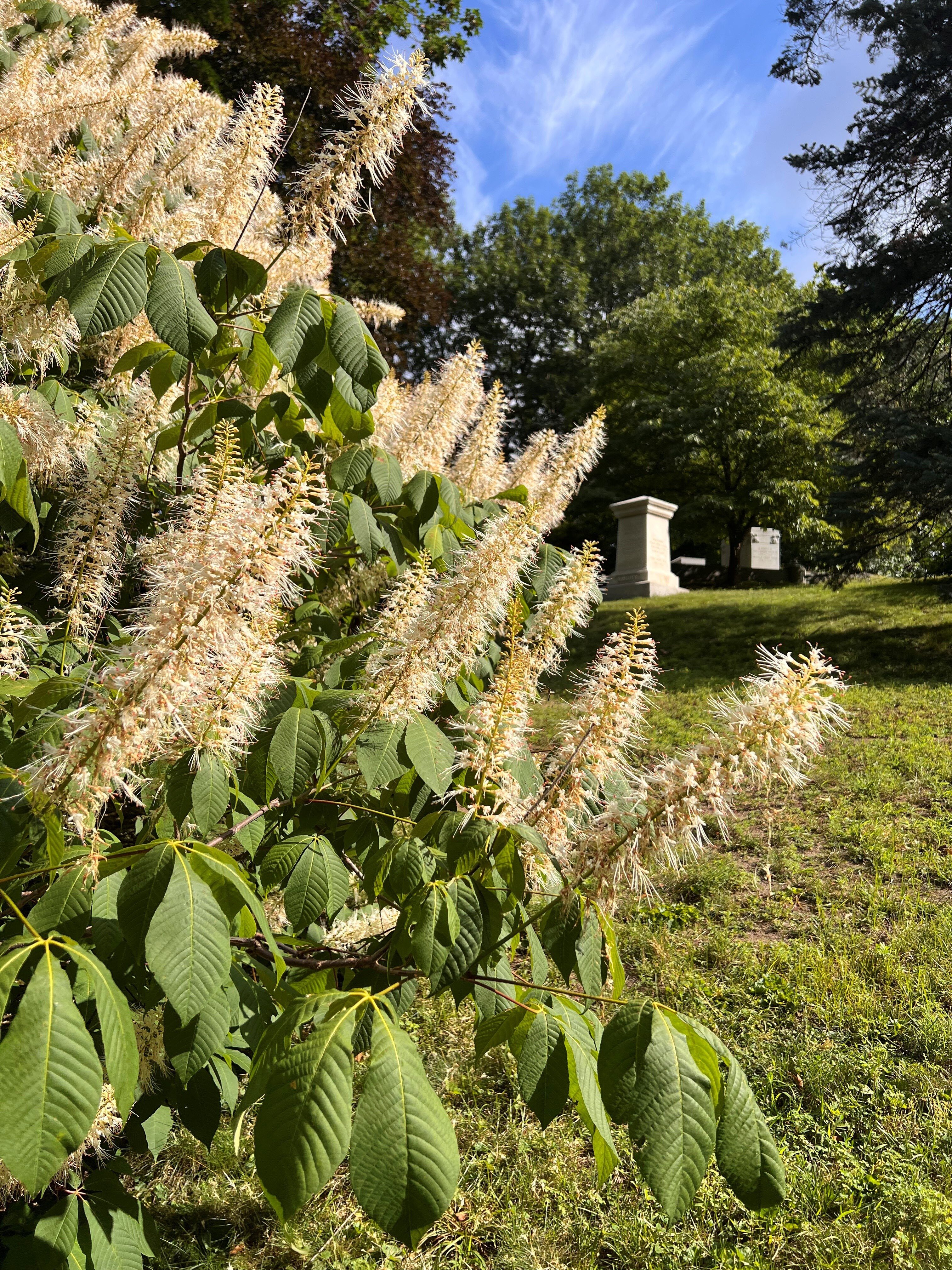
...What is Summer in a fine brocaded gown...
Amy Lowell
The genus Aesculus is comprised of 13-19 species (depending on taxonomic authority) of trees and shrubs native to North America, Europe, and Asia. Aesculus parviflora is a large spreading shrub reaching 10-12 feet high and often that wide at maturity. The multiple suckering upright stems create an oval shape having a central high point, an appearance of a grove of small trees. The palmately compound leaves have five to seven leaflets, each 3-9 inches long by 1-4 inches wide. These leaves have no serious insect or disease problems – unlike the Aesculus hippocastanum, common horse chestnut tree, whose leaves often turn unsightly brown and drop early in September.
The specific epithet name parviflora, given by Carl Linnaeus (1707 – 1778), is from the Latin parvus meaning little or small and flora meaning flower, hence “little flower”. Each white flower has four petals, one-half inch long surrounding pinkish-white, thread-like stamens topped with red anthers standing out one-inch from the petals. Multiples of these flowers are arranged on tapered, cylindrical 8-12-inch-long upright panicles (the bottlebrushes), the effect is outstanding, bold yet delicate at the same time. The plant will grow and flower in sun or shade within USDA Zones 4-8.
It is native to the southeastern states of South Carolina to Alabama and south to Florida although historically disjunct populations have been recorded in Pennsylvania and New Jersey. Aesculus parviflora was discovered in the mid-1770’s by William Bartram (1739-1823) naturalist, artist, writer and plant explorer. Early in his life, William was referred to as “my little botanist” by his father, the famous Philadelphia-based plant collector, John Bartram (1699-1777) whom Linnaeus called “…the greatest natural botanist in the world”, and who had also served as the Royal Botanist in the Colonies of King George III (1738-1820).
William Bartram published in 1791 Travels through North and South Carolina, Georgia, East and West Florida, the Cherokee Country, etc., which became a small classic of American literature. This natural history study had profound influence on English romantic poets Samuel Coleridge (1772-1834) and William Wordsworth (1770-1850). Also, John James Audubon (1785-1851) read the work with a “thrill of delight”. Certainly, Mount Auburn’s visionary founder Jacob Bigelow (1787-1879) would have known this book and probably visited Bartram’s garden while earning his medical degree from the University of Pennsylvania (1810).
You may ponder some of this history as you seek out fine plantings of Bottlebrush Buckeye found in profuse flowering along Garden Avenue, Fountain Avenue, Crystal Avenue and/or Indian Ridge Path on your early July visit to Mount Auburn.

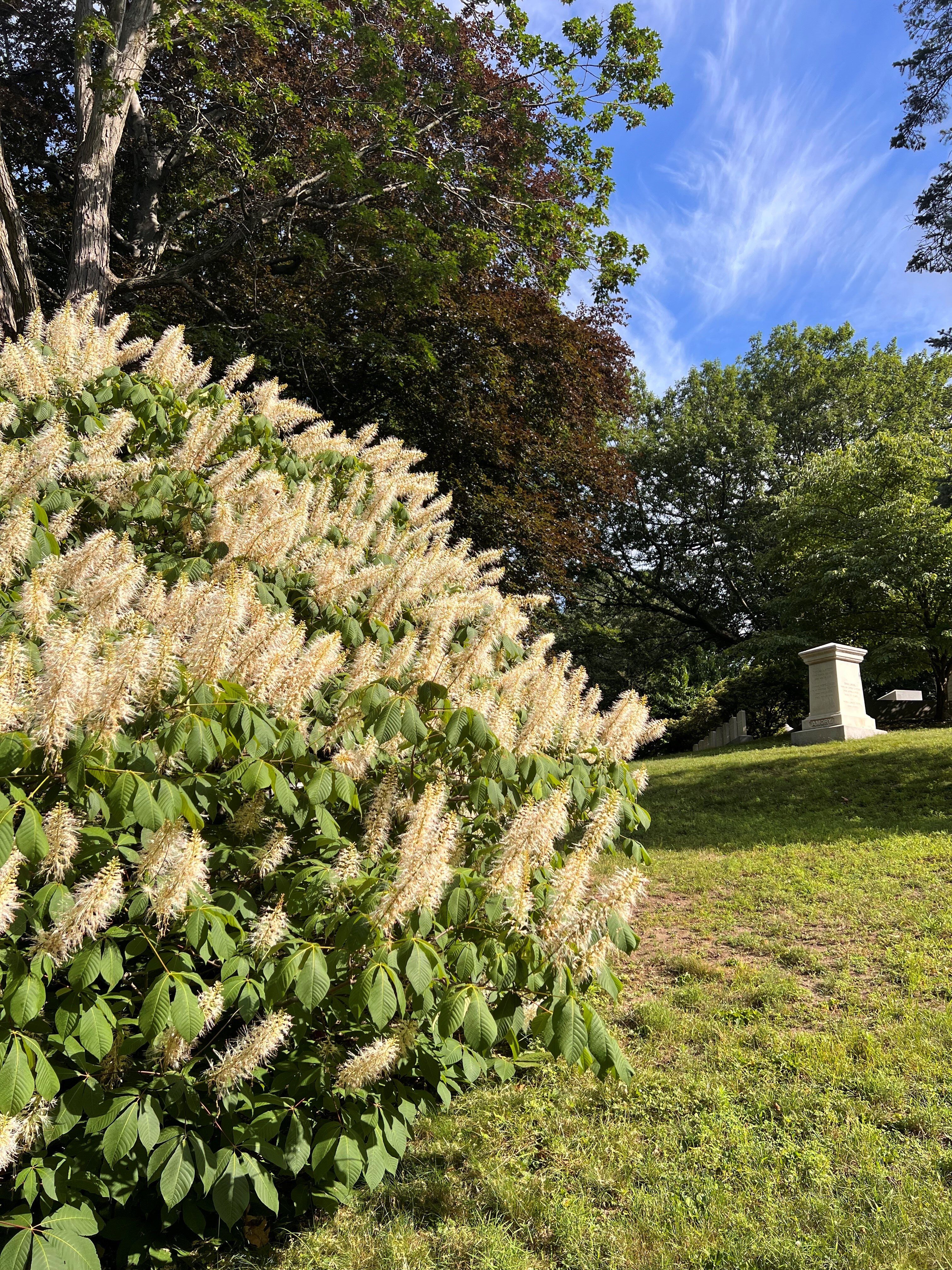
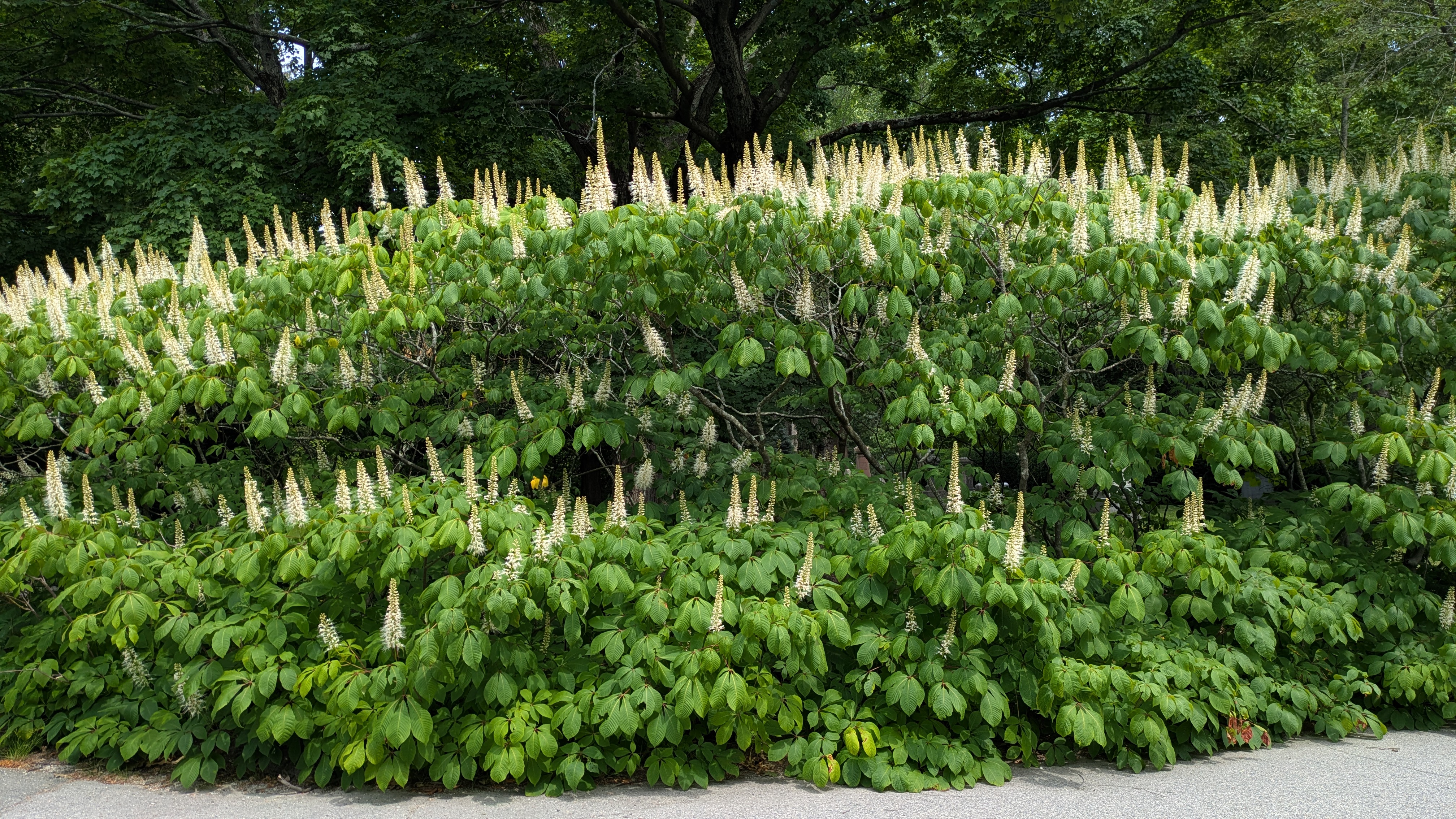
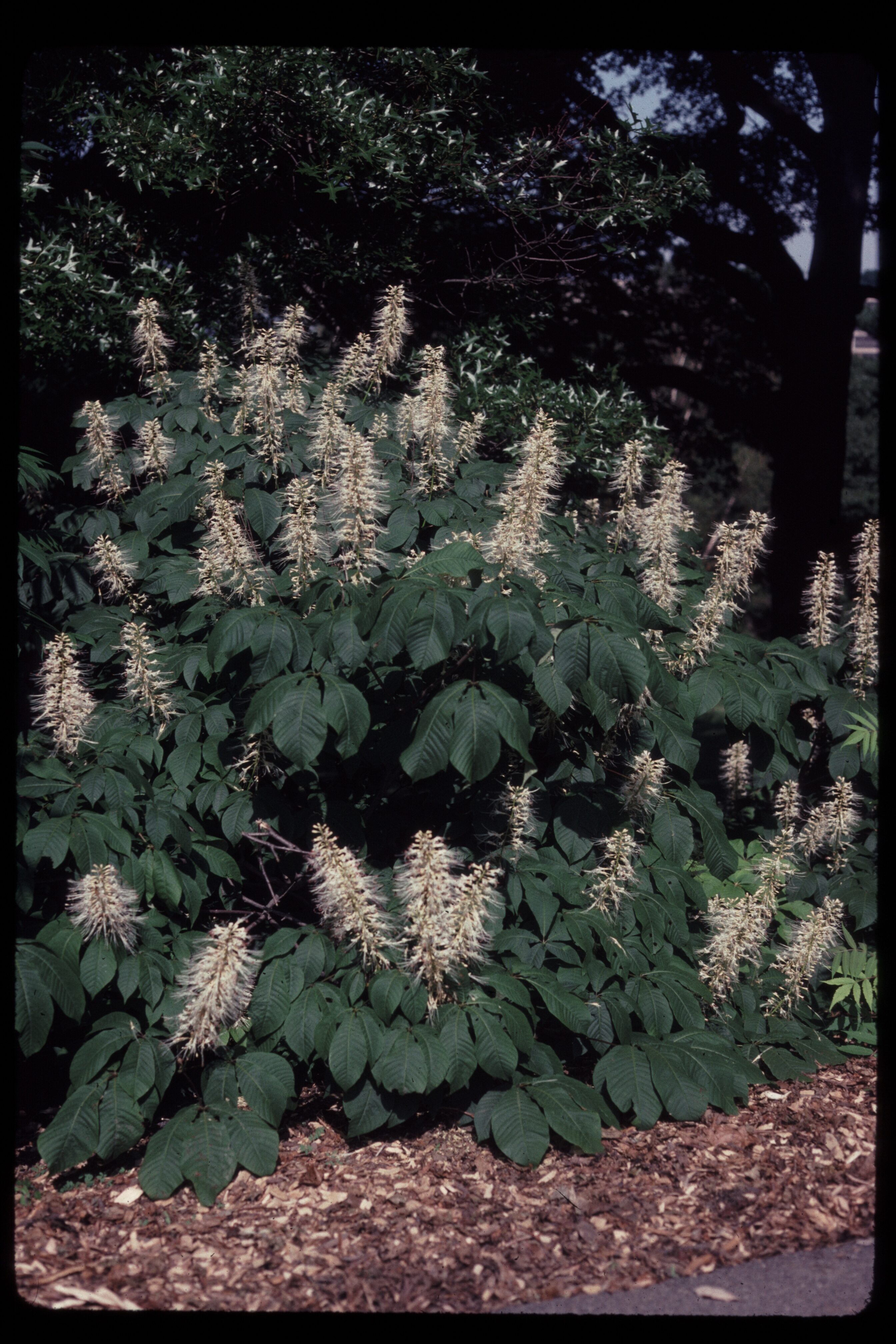
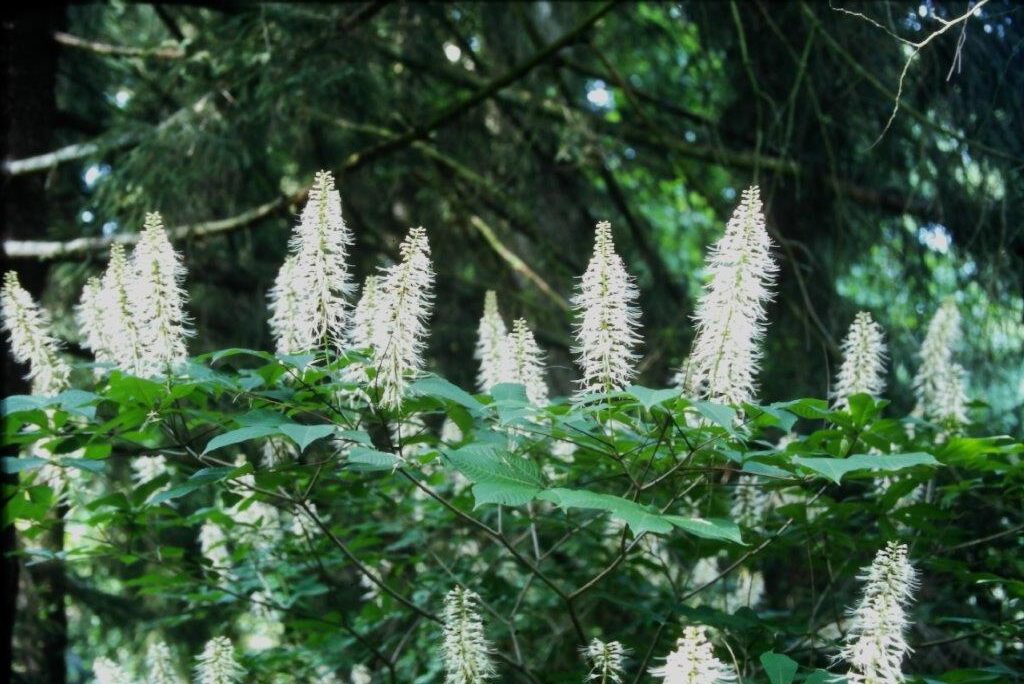
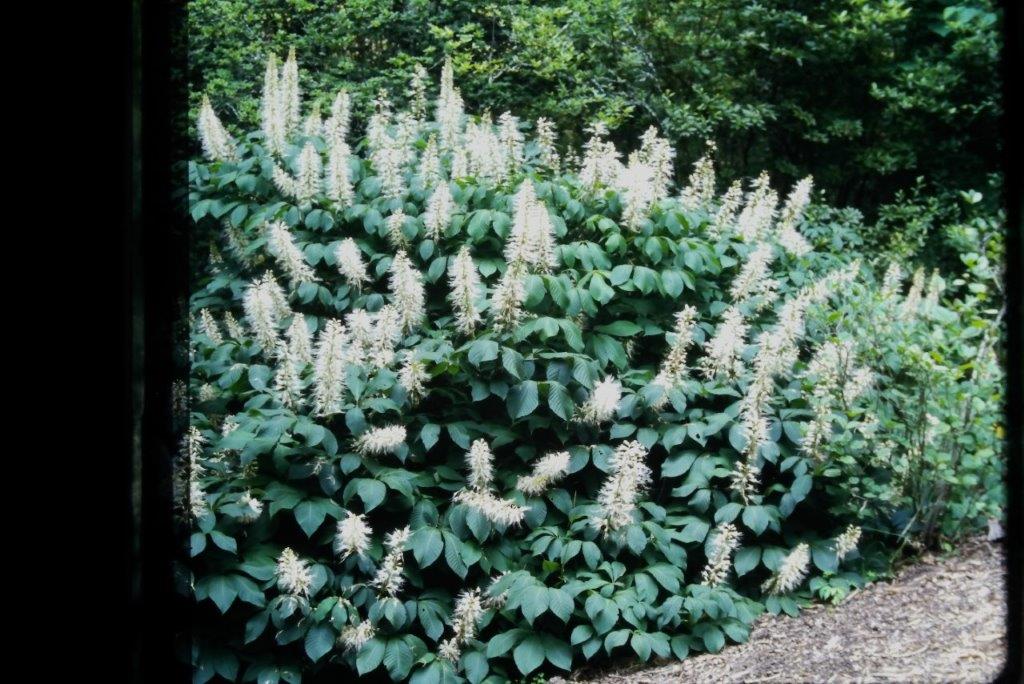
Comments
Comments for this post are closed